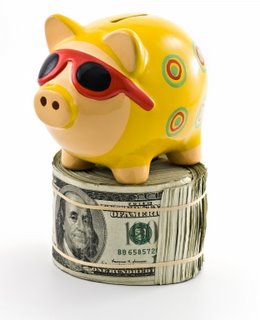 For years, credit card issuers aggressively pursued new borrowers and urged old borrowers to charge more. Mailboxes across the country were filled with new offers, introductory rates, and rewards for getting those cards out of wallets and into use.
For years, credit card issuers aggressively pursued new borrowers and urged old borrowers to charge more. Mailboxes across the country were filled with new offers, introductory rates, and rewards for getting those cards out of wallets and into use.
Each issuer tried to outdo the other with promises of low rates on balance transfers and ever higher credit limits. Then, the financial crisis reared its ugly head and those card issuers began to face larger and larger losses.
The past few months have seen major credit card issuers pull back on new credit cards, lower credit limits, raise interest rates, and close accounts – even for their most creditworthy borrowers.
Now a new breed of lender is offering to step in where credit card companies fear to tread. This new breed is called the Social Lender. This is peer-to-peer lending, where the lender often has a choice over who will use his or her money.
Lenders working through Kiva.org, for instance, might choose to lend $500 to a start up entrepreneur for the purchase of equipment. Since 2005, Kiva members have lent more than $58 million to more than 83,000 entrepreneurs. In years past, most were in developing countries, but now Kiva also lends in the U.S.
Pertuity Direct is the newest entrant in social lending. Investors place their funds in a mutual fund operated by National Retail bank. Borrowers seeking to use those funds apply through the website for a fixed-rate, fixed-payment loan – generally payable within 1 to 3 years. The minimum credit score required is 660 and interest rates are as low as 9.6%. Approval is almost instant, and money can be in the borrowers’ hands within 1 or 2 days.
Some social lending sites will accept lenders who wish to invest a mere $20 – giving almost anyone the opportunity to invest.
Some social lending is directly modeled after sites such as Facebook and eBay. Prosper, for example, lists loan requests ranging from debt consolidation to moving expenses. Lenders can then choose which loans they’d like to fund, and bid on those loans at interest rates and terms they’re willing to accept.
Lending Club gets even closer to the social networking model – allowing its borrowers to find potential lenders based on their location, their “network” or their “friend” status.
Social lending now also extends to student loans, which were at first excluded because of the short pay-back term. Lenders do recommend that students first apply for federal loans, and use private lenders as a fall-back option.
Several companies are participating, but the main contenders in the student loan arena are GreenNote, Zopa, and Fynanz.
GreenNote relies on the same kind of social networking as Facebook – and loans are transacted between people who are “friends.”
Zopa follows a CD model and relies heavily on partnerships with credit unions.
While Fynaz does set a bare minimum FICO score for borrowers, it relies more heavily on the “Fynanz Academic Credit Score,” which rates a student’s GPA, his or her course of study and the educational institution’s profile.
Online Banking Report has predicted that social lending will reach approximately $130 million this year.



